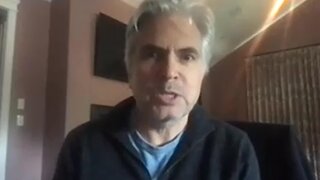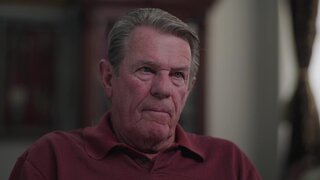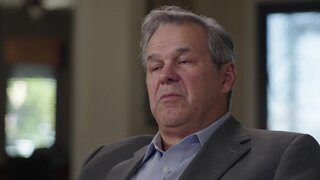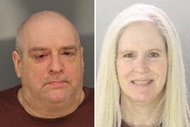Create a free profile to get unlimited access to exclusive videos, breaking news, sweepstakes, and more!
What Really Happened During the Osage Murders in Oklahoma
The Osage Nation found prosperity in Oklahoma after they were forced to move off their native lands, but in the 1920s, tribe members mysteriously started being murdered.
For centuries, indigenous communities have been forced to leave their land, the place they called home, as American settlers moved west. While some people were pushed about, forced onto lands that were barren and difficult to make a living on, the Osage Indians were a rare success story, having found oil-rich lands in Oklahoma.
But their good fortune came with unforeseen consequences. In the early 1900s, dozens of Osage Indians turned up dead, killed by a variety of means, though it was often difficult for families to prove that their loved one had been targeted.
Eventually, the federal government intervened, leading to the arrest of two men for only a handful of the murders. It was one of the first times the FBI, then known as the Bureau of Investigation, became involved in such matters, making it one of the more notable cases in FBI history.
History of Osage Indian Tribe
The Osage were a unique tribe because they owned the land they lived on, which was located in a mountainous area of Oklahoma. As David Grann explained in his book Killers of the Flower Moon, Osage Chief Wah-Tian-Kah chose the area because he knew it wasn't land that settlers would want. It was rocky and infertile, meaning farming would be difficult.
They also had the upper hand in their negotiations as Oklahoma was nearing statehood and legislators were desperate to finalize their deal with the Osage. For this reason, "they were able to slip into their treaty for allotment a very curious provision at the time which essentially said that they will maintain the subsurface mineral rights to their land," Grann explained in an interview with NPR.
The Allotment Act was finalized in 1906 and Oklahoma became a state the following year.
RELATED: How One Indigenous Community Is Finding Healing After Loss
By then, the Osage had found oil under the land. And, in Grann's book, he wrote, "To obtain that oil, prospectors had to pay the Osage for leases and also royalties on revenues."
As prospectors continued to drill for oil over the years, the Osage would receive payments, which grew substantial. In 1923, Grann wrote, "the tribe took in more than $30 million, the equivalent today of more than $400 million."
More interesting was the fact that the Osage people each received a headright, which, Grann wrote, was "essentially, a share in the tribe's mineral trust."
"But to keep the mineral trust under tribal control, no one could buy or sell headrights. These could only be inherited," Grann continued.
However, this would make the Osage the target of those seeking to strike rich in the years to come.
What is Killers of the Flower Moon about?
The investigation into the killings began primarily due to the death of Osage woman Anna Brown, a 36-year-old who was found shot to death execution-style a week after she went missing on May 21, 1921 — the same day Osage man Charles Whitehorn was found dead.
Then, weeks later, Anna's mother died, Lizzie, died in July 1921 after falling ill. "Evidence later surfaced that that she had been poisoned," Grann told NPR in an interview.
Members of Anna's family continued to die under mysterious circumstances. Anna's sister Rita Smith's house had been bombed, killing her and her white servant, Nettie Brookshire, in March 1923.
Rita's husband Bill Smith survived the blast, telling those who pulled him out of the rubble, "They got Rita and now it looks like they've got me," according to Killers of the Flower Moon. Bill succumbed to his injuries four days later.
Anna and her family were only a handful of the Osage to be killed during a time known as the Reign of Terror. Dozens of others were found dead by either gunshot wounds or illness, later believed to be caused by poisoning.
And it was often difficult for anyone to be held accountable, as the police force was lacking.
"There was a great deal of lawlessness. And because of that, justice was often privatized — that if you had money and resources, you had to turn to private investigators," Grann explained to NPR.
The Bureau of Investigation Sends Agents
Multiple private investigators and others seeking justice for the Osage attempted to get the federal government involved, but they too were killed. One man, W.W. Vaughan, was thrown off a train while another, Barney McBride, was found beaten to death in Washington D.C., according to Grann.
With the death toll at that point well over 20, the Bureau of Investigation, then headed by a young J. Edgar Hoover, had to get involved. "They also had jurisdiction over American-Indian reservations, which is why they got jurisdiction over this case and why it became one of their first major homicide investigations," Grann told the outlet.
RELATED: The Murdered And Missing Indigenous Women Crisis Explained
Hoover sent former Texas Ranger Tom White to investigate the killings, and he recruited other men who would go undercover in the community, as White understood that this was a dangerous operation that required the utmost secrecy. Included among the group of ragtag agents were a former New Mexico sheriff, a former Texas Ranger, a former insurance salesman turned undercover operative, as well as agents John Burger and Frank Smith. They also negotiated a deal with outlaw Kelsie Morrison, who agreed to work as an undercover informant in exchange for an assault charge being dropped.
Notably, White also brought in John Wren, an Ute man who previously served as a spy in the Mexican revolution. Grann wrote that he's believed to be one of the first indigenous agents in the FBI.
It didn't take long for the men to realize that this region of Oklahoma was rife with corruption and intrigue.
The Osage were frequently taken advantage of by the people they brought into their own homes and the guardians who were tasked with overseeing their finances. Per the Allotment Act, Native Americans were deemed too "incompetent" to handle their own money, so the Office of Indian Affairs appointed guardians to oversee their finances, according to Grann. Incompetency was determined by an Osage's "racial weakness," or "the quantum of Indian blood in the property holder." So, full-blooded Indians were often granted guardians, while those of mixed race weren't.
Anna Brown's sister, Mollie Burkhart, who was full-blooded, learned through White's investigation that her husband and guardian Ernest Burkhart was part of the plot to kill her family. Grann said to NPR, "She had two children with him, and she learned that he was one of the many willing executioners. And she had to sit through the trials and listen to the evidence presented and learn the secrets of her husband, that the secrets of this murder were right inside her house."
William Hale Caught
Ernest Burkhart and his uncle William Hale, a wealthy cattle rancher, were by Mollie Burkhart's side as she grieved for her sisters and mother. William even hired a private detective and offered a reward in exchange for information leading to the arrest of the killers, according to Killers of the Flower Moon.
But White and his investigators noticed that the men stood to earn a large fortune in the event of Mollie's death. In Killers of the Flower Moon, Grann explained that when Anna died, her headright passed on to her mother Lizzie, whose headright would be passed on to Rita and Anna in the event of her death. When Rita died, her headright then went to Anna.
Anna's marriage to Ernest, who was also her guardian, meant that he oversaw her large fortune. And if she died, he'd stand to inherit everything.
Though White and his men struggled to get anyone in the Osage community to speak out against Hale — everyone feared they, too, would face retribution — the private detective purportedly hired by Hale to investigate Anna's death told them that he was actually hired to craft alibis for Ernest, William and William's nephew Bryan Burkhart, who had driven Anna home the night of her murder.
Eventually, after months of undercover work, White and his men found a witness who had not yet died under mysterious circumstances: Burt Lawson, who claimed to have planted the bomb under the Smith home. He said that Hale and Ernest Burkhart were in on the scheme to kill the family.
It was enough to get an arrest warrant for both men, who immediately denied any wrongdoing.
Ernest Burkhart
Though the men were in custody — and kept separate from each other — they could only be held for so long before White had to let them go. Desperate to make Ernest break, White turned to outlaw Blackie Thompson, a part-Cherokee criminal who was in custody for a separate murder, according to Grann. He had a strong dislike of Hale and Ernest, so he agreed to share what he knew of the crimes — even agreeing to confront Ernest in the interrogation room.
Ernest, now aware that he was caught, shared every detail of his and Hale's plans, naming John Ramsey as the shooter in the death of Henry Roan, who was found shot to death in his car. He also identified Anna Brown's murderer: Kelsie Morrison, the same man working for White and his agents.
After White learned that Ernest was one of the many men behinds the murders, he instructed officers to take Mollie Burkhart, who was in poor health, to a local hospital, believing that she may be poisoned. "It is an established fact that when she was removed from the control of Burkhart and Hale, she immediately regained health," an agent wrote, according to Killers of the Flower Moon.
Still, Mollie refused to believe that Ernest was involved in the murders. "My husband is a good man, a kind man. He wouldn't have done anything like that. And he wouldn't hurt anyone else, and he wouldn't ever hurt me," she said.
When it came time for the trial in the Smith explosion, Ernest was ready to testify for the prosecution — until he had a sidebar with Hale's defense team, which was then hired to represent him. The trial seemed destined to end with Hale walking free, but then, in June 1926, Ernest once again changed his mind.
A week prior, Ernest and Mollie's youngest daughter, Little Anna, had died after falling ill. She was 4 years old.
Ernest told his defense lawyer, according to Killers of the Flower Moon, "I'm sick and tired of all this... I want to admit exactly what I did." He entered a guilty plea to the murder of Rita and Bill Smith, as well as their housekeeper.
Ernest testified in Hale and Ramsey's trial for the murder of Henry Roan, which ended in the men's conviction. Likewise, Morrison was found guilty of Anna Brown's murder.
However, none of the men were given the death penalty. The all-white jury instead recommended a life sentence for all three men.
What Happened to Tom White, William Hale, Mollie Burkhart and Ernest Burkhart?
Mollie Burkhart divorced Ernest Burkhart following Anna Brown's murder trial in which he detailed every sordid detail of their plans. She later married John Cobb in 1928, and three years later she'd be declared competent. At the age of 44, she was released from the guardian system.
Following the trial, William Hale, as well as John Ramsey, were sent to Leavenworth Prison in Kansas — where Special Agent Tom White was now working as a prison warden. Hale was later paroled in 1947 but was forbidden from returning to Osage. He died in an Arizona nursing home in 1962.
As previously mentioned, in 1926, White turned in his FBI badge in exchange for a more stable job, albeit one that was just as dangerous. Case in point: He ended up being taken hostage by a group of outlaws who escaped the prison in 1931. During the escape, an inmate went to shoot White in the face, but the bullet shattered in White's arms and chest when he shielded his face. He was left bloodied and seriously injured but miraculously survived after several days in the hospital. He died of a stroke at the age of 90 in October 1971.
Ernest Burkhart was released from prison on parole in 1937 — the same year Mollie Burkhart died at the age of 50. However, he robbed an Osage home and was sent back to prison, later being released in 1959. He too was forbidden from returning to Osage, but he applied for a pardon, which was granted in 1962, allowing him to return to the reservation, where he reunited with his son Cowboy and daughter Elizabeth.
Cowboy's daughter, Margie, told Grann that her father had a difficult relationship with Ernest, for obvious reasons. "I think part of him longed for a father. But he knew what his father had done. He called him Old Dynamite," Margie shared.
Ernest Burkhart died in 1986.
The Osage Indians continue to receive their headrights, though it's not enough to make a living.
"Today, approximately 26 percent of all headrights are owned by non-Osage individuals, churches, universities, and other non-Osage institutions who can freely bequeath such interests to any person or entity the non-Osage chooses. The Osage Minerals Council is currently seeking federal legislation to permit non-Osages who own a 'headright' interest in the Osage Mineral Estate to gift or sell those headright interests back to the Osage Minerals Council, the Osage Nation, or Osage individuals," the Osage Nation website reads.
Though the Osage population was decimated in the early 1900s, the website reads, "The Osage Nation is thriving on our Reservation in Northeast Oklahoma — a people of strength, hope, and passion, honoring the stories of the past and building the world of the future."




































